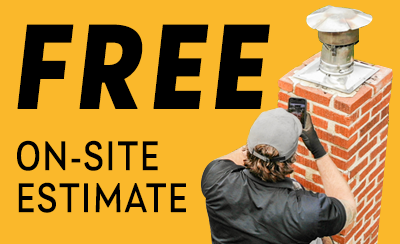Why Regular Chimney Cleaning is Essential for Home Safety
Did you know that the Chimney Safety Institute of America (CSIA) statistics indicate there are more than 25,000 chimney fires annually in the United States? These fires cause over $125 million in property damage. It is impossible to compute the total of human deaths and injuries if these fires spread to occupied homes.
Years ago, during the Industrial Revolution, chimney sweeps were in demand as homeowners realized the dangers of chimney fires. The buildup of creosote was a constant danger to homeowners. They did not burn wood in the fireplace for ambiance as we do today. Fireplaces were used for heating and cooking. The buildup of creosote, a tar-like substance that forms on the walls of the chimney, is flammable. Once creosote catches fire in the chimney, it can be catastrophic.
During the 21st century, chimney fires are just as prevalent. Therefore, the importance of regular maintenance is high to avoid any damaging fires.
How Often Should I Have My Chimney Cleaned?
According to the National Fire Protection Association (NFPA) and the Chimney Safety Institute of America CSIA, an annual inspection and cleaning is recommended. This is a good practice to maintain safety and efficiency. They suggest that once creosote or soot has accumulated to 1/8-inch, a cleaning is recommended sooner than a year.
Let’s Be Proactive
What can you, as a homeowner, do to help prevent creosote from building up? Let us discuss what you can do.
Use seasoned wood
Burning wet wood will smoke more, causing creosote to build up. If you cut wood yourself, allow it to dry for 6 months to one year before burning it in your fireplace.
Use hardwood in your fireplace
The hardest woods are oak, maple, and hickory.
Proper airflow
Make sure the damper is open completely before starting a fire. You may adjust as the fire starts. This will allow smoke to go up the chimney and allow it to exit the home.
Clean out the ashes from the firebox
Use this fertilizer in your garden once it has cooled
Don’t burn wood with paint on it or pressure-treated wood Not only will this promote creosote buildup, but it can also allow toxic fumes in the home.

Start with a hot fire
To achieve this, when building your fire, start by putting large logs on the bottom of the firebox. Continue with kindling and rolled newspaper as a firestarter. Starting with a strong fire will help to eliminate or slow down the process of creosote.
You will enjoy many nights of a safe and efficient fire by following these simple steps. This, along with your annual chimney sweep and inspection.
A clean chimney is a safe chimney, and we’ll keep yours as safe and efficient as it can be. Our owners are certified through the Chimney Safety Institute of America – a stringent industry certification held by only the best sweeps in the U.S. We remove flammable creosote from chimney flues, reducing the chance of a chimney fire. We also remove debris and obstructions that could hamper the drafting of smoke and carbon monoxide. Contact us today!




